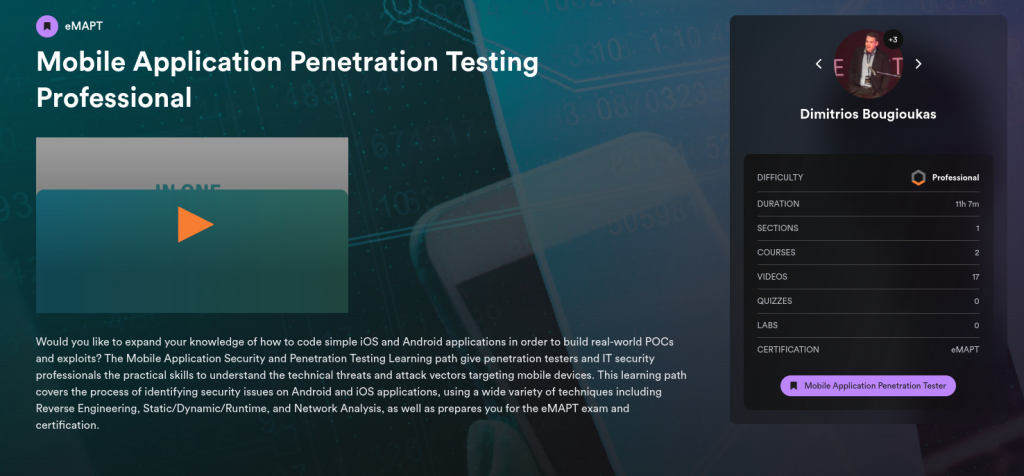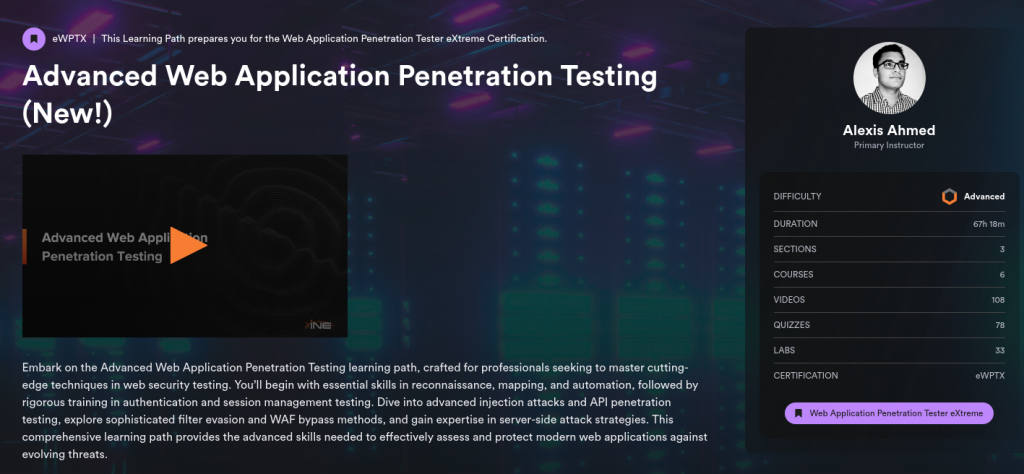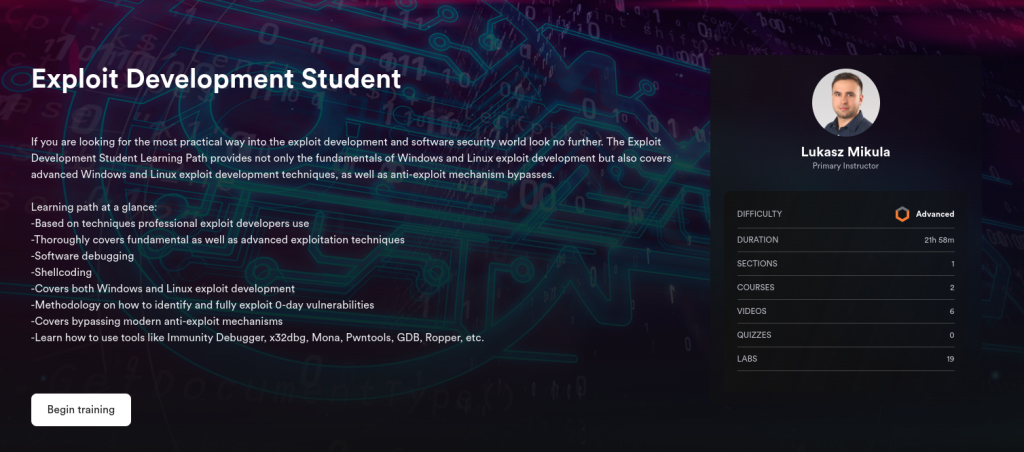The Advanced Penetration Testing Learning Path provides all the advanced skills required to carry out a thorough and professional penetration test against modern networks and infrastructure, such as the ability to execute state-sponsored-like operations and advanced adversary simulations.
You must be familiar with PowerShell scripting, Active Directory administration and Windows internals knowledge, basic reverse engineering skills, and possess a good working knowledge of network protocols, as the content dives into all stages of a red-teaming engagement.
Learning path at a glance:
- Implementation details on numerous undocumented attacks
- Obscure ways of exploitation and backdooring
- Advanced client-side exploitation techniques
- Custom attack vector and payload creation
- Custom payload creation techniques
- In-depth analysis of Active Directory exploitation
- Stealthy lateral movement and evasion against modern defenses
- In-depth analysis of critical domain infrastructure exploitation
- In-depth details of common misconfigurations and weaknesses
- Details for covert operations and stealthy persistence









